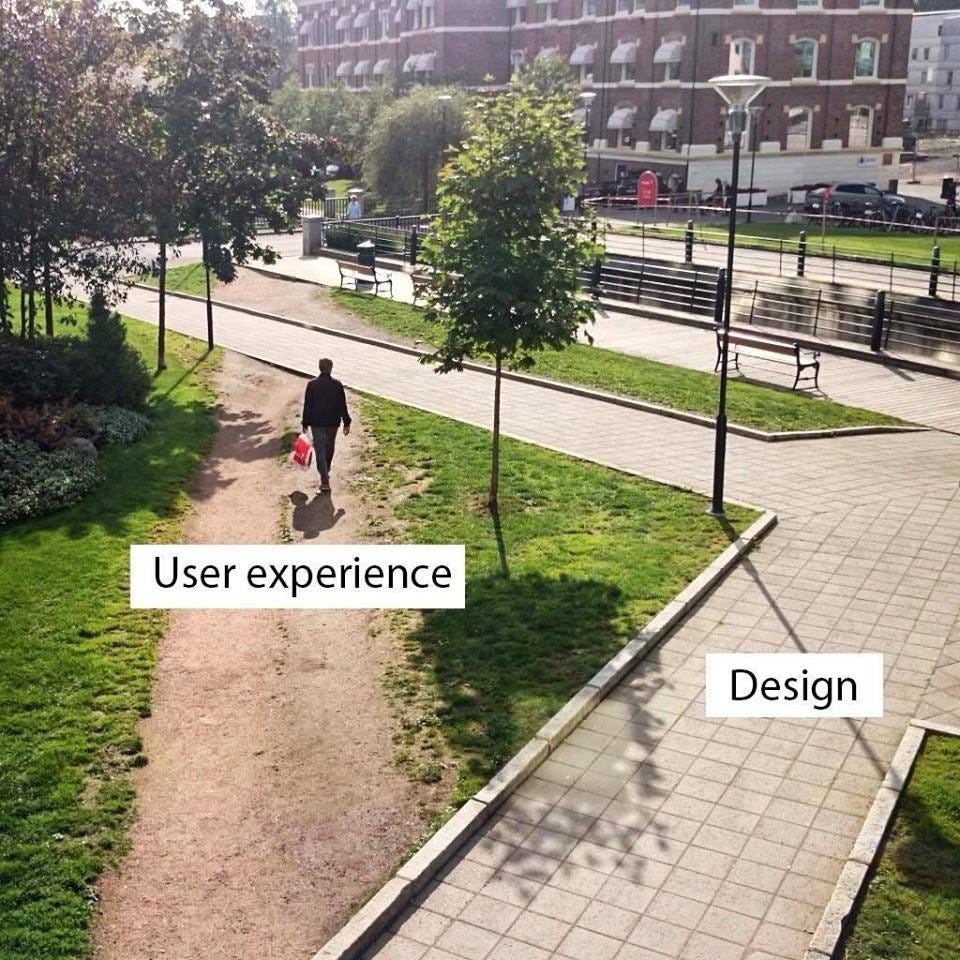How user research creates content
When you speak to your customers about your product, you also create content for the sales and marketing teams.
Every time you do qualitative research you open up a dialog. It doesn't even need to be formal research. Every customer call, support ticket, and almost every user interview is a conversation.
User interview conversations are content.
Think about the last business book you read. Guaranteed that the book was full of interviews and conversations. Each of those conversations provides new insights and knowledge. Insights come from conversations and every user interview is just that — a conversation.
Storytelling
By far the most undervalued part of any product is the storytelling. Products are vessels for stories and insights drawn from conversations are small stories that fill that vessel. At a macro level, a product might tell a story like, “I make you look cooler and more interesting than you really are” (Instagram/Snap), “I’m your personal chauffeur” (Uber/Lyft) or “This is like having a superpower where you can see through walls” (Ring/Simplysafe).
Each of these stories comes from the experience of the user. More often than not, the actual words used to describe the experience also comes from the user. Almost daily, our user research receives descriptions of a product or service that an advertising agency would kill for.
A user will describe an experience in the unfiltered and authentic language that creates immediate understanding and meaning.
At the micro-level, the user’s descriptions of experiences are snapshots of the product. The user’s reaction to an interaction creates meaning, and meaning is what creates value. Without meaning and value, you have a wafer-thin UI and nothing else. Stories are our best tool for communicating value.
Content is Always the Bottleneck
Ask any designer to tell you what's holding up their project and they’ll say content. Whether it’s the copywriting, that all-important product image, the description to accompany the image, or the technical info that supports the page, it’s content. Not a single screen or page gets created without content.
Qualitative research produces content by the bucketload but because marketing or the agency didn’t create it, it’s overlooked.
When you talk to customers you’ll also get unsolicited testimonials that are untethered from sales or marketing requests. These free-form testimonials are more authentic and less forced. You also get conversational descriptions of the product experience, which sound less technical or robotic.
User Research Calls Bullshit On Bad Content
Users will do what they want with your product. In almost every use case they’re not interested in how you tell them to use the product, they figure out their own paths. Internally we might call this a pivot, but really what we’re saying is “the research proved we were wrong and the customer was right”.

Tracking the user flows can also form the backbone to demos and videos of the product. How they use the navigation or interactions will illuminate the optimal way to use the product you’ve created. If you’ve misunderstood the user flows then the interviews will reveal your mistakes and open up new content opportunities for demos and use descriptions. For complex apps, you'll also get all your Q&A content, which you can share on your FAQ’s, Zendesk or with support/call center.
Make Marketing Look Good
Product and marketing are frequently at odds with each other. Why? Because marketing wants the product org to handoff a flawless experience that they can use to distribute to their channels. On the flipside, the product team wants the marketing team to help them create content (brand styles, identity, product images, testimonials, descriptions, etc.) so the product looks awesome.
Each interview is another captured story or perspective that could be the next blog post, press article hook or technical writers background material.
User research achieves some of these goals for both marketing and product. Assuming the product team is responsible for user research, which it often is, they can help the marketing team by providing them with solid insights and content from interviews.
Internal and Cross-Functional Content
Inviting marketing to witness interviews has the cross-functional advantage of building alignment between departments and teams. Even if these interview observations or recordings aren’t directly creating content, they are creating a clear target for all functional teams.
Content isn’t always externally facing. The best companies I’ve interviewed are always doing a ton of internal marketing to create understanding, alignment, and empathy. Sharing user interviews reduces siloed thinking because the user breaks the tie. Regardless of the functional role someone performs, they can’t deny what they see before them.
So, What Do You Do Now?
You stop waiting for marketing to get you the copy you’re waiting for, and sales to get those testimonials you requested 3 months ago. Go talk to users. Interview them about their experiences. Ask them to describe those experience in their words. Share the interviews, or better yet, invite other teams to observe the research and participate in the post-interview analysis. You’ll get a boatload of research, and enough content to last several months.

